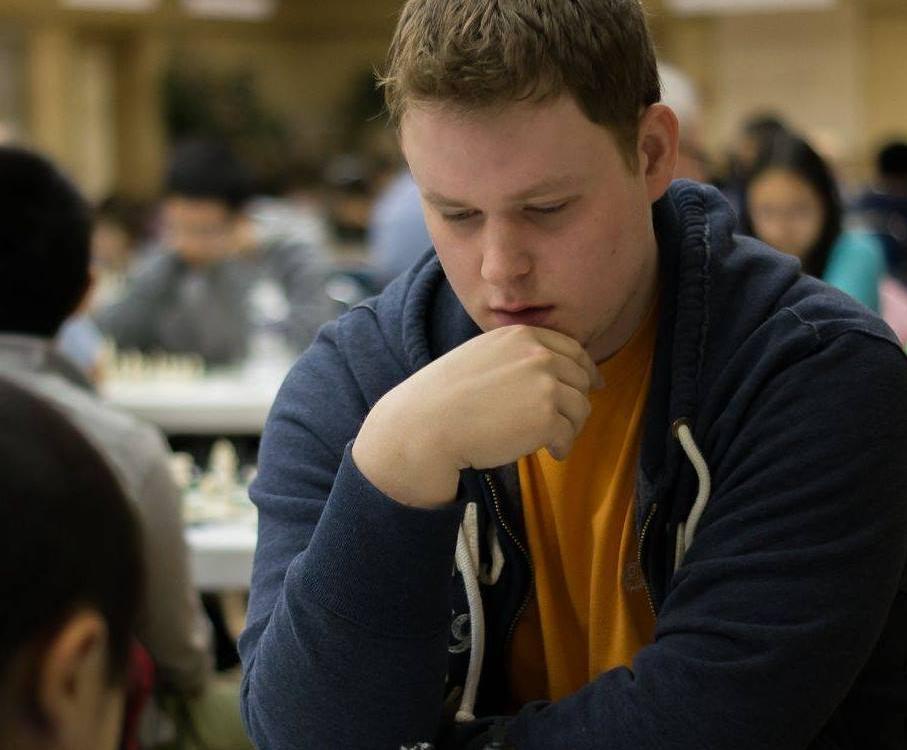
My Path to NM - Part 2
I registered for my first tournament in 2008. The ChessCA Open in Elora. I was forced to take a full-point bye in the first round, as I was the only unrated player. The rules have since changed and unrated players cannot be given byes, but I digress.
In lieu of a normal tournament game, the TD set me up with a 'floater' to play a rated game while we waited for the second round to start. I had white. I was nervous to the point of hyperventilating and chest pain, a full blown panic attack. Finally, when I calmed down enough to touch the piece I was aiming for, I opened 1. d4. My 1400 opponent replied 1...Nf6 and I played 2. c4. I made a huge error shortly thereafter. 2...Nf6 3. e4?. I guess the stress got to me. After 3...Nxe4 4. Bd3 Nf6 5. Nc3 g6 6. h4 I went crazy attacking and ended up winning.
I finished my first tournament with 2 lucky wins, and 3 well deserved losses. I also was desperate to play in another tournament, I loved that competitive tension so much.
The next month, I participated in my first Sudbury Championship (now Northern Ontario Ch). I can't remember why, but I had to take a second round bye for some other commitment, and so I only played four rounds. I ended up getting some favourable pairings and went 3/4. My rating after the tournament: 1831. This tournament was where I got to know three players who were instrumental in my development: Bob, Mavros, and Michael.
Bob was (is) a legend. Bob has won something like 17 Sudbury/Northern Ontario championships. He holds the correspondence chess grandmaster title, which he earned in the 70's or 80's, long before chess computers. He also held the National Master title, which I so desperately wanted.
Mavros won this tournament with a perfect 5/5 score, most of my progress can be attributed to our rivalry, more about that later.
Michael was my only loss in this tournament. He played a King's Indian Attack, which I had never really studied before. I had a space advantage, good squares for all my pieces, a safely castled king, and absolutely no moves. He slowly pushed h4-h5, moved his knight to f1, then h2, then g4, and before long I was forced into a horrible position just to avoid a mating attack. I was shocked. I thought I was better, the computer thought I was better, and I lost anyway. My takeaway from the game, however, was wrong.
I decided I needed to learn more about the KIA. I started studying the opening extensively, memorizing lines and coming up with all kinds of variations that I planned to use. What I should have learned is that a space advantage is only an advantage if it restricts your opponent or helps you in some concrete way.
The next year was one of rapid growth. Mavros hosted a 13 man round robin tournament. The tournament itself was controversial. One participant with a history of baseless cheating accusations made another accusation. As a result Mavros decided to ban spectators, and insisted every game was played without 'fans'. In retrospect, not a terrible decision, but annoying at the time. The real key to my development was round 1.
My first round game was against Mavros himself. I already had a reputation of being an opening geek, and he knew it, so he played an offbeat Alekhine's defense. Out of book early, I decided to make a hyper-aggressive pawn sacrifice that I wasn't able to calculate simply because it 'felt' right. It turns out this sacrifice refuted his entire variation. Unfortunately for me, I wasn't able to calculate at a high enough level to convert the win, and I went on to lose a very tricky endgame.
Missing my chance to beat an expert level player set me off. I started studying tactics for hours upon hours every day. At one point I was top 100 in ChessTempo tactics. I also worked briefly for chess.com, helping with their tactics trainer. More recently, I created goatedchess.com which I now use as my primary tactics trainer.
My obsessive tactics training paid off. In 2010 I played Bob for the first time, and found a very creative tactic which ended the game instantly. By the end of the year I cracked 2000 ELO.
This massive rating spike earned me a wildcard invitation to the Canadian Closed in 2011. The experience of playing 8 rounds exclusively against titled players was incredible. I finished with 3.5/8, which was an excellent result. I cracked 2100 at the end of 2011.
Because of my college, work, and family schedules, my tournament participation has steadily decreased since 2011. I kept studying hard in 2012 and 2013, although my effort level has also decreased since then. Between 2011 and 2013 I studied all of Karsten Mueller's endgame DVD's made for Chessbase (14 of them!). As a side note, there are more effective and interesting ways to study the endgame than these DVD's; they're painfully boring.
In 2013 the momentum from studying tactics and endgames culminated in my earning the National Master title. In 3 consecutive tournaments over the summer of 2013, I went from 2168 to 2221 to 2244 to 2286. With a rating over 2200 and the three 'NM norms' required in Canada, I had finally earned the title I had been chasing since 2008: National Master.